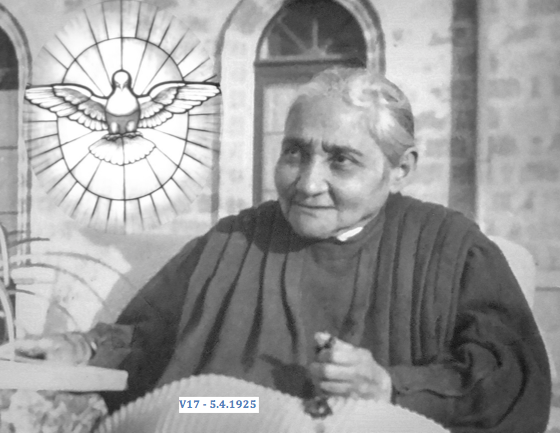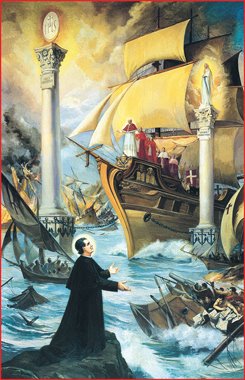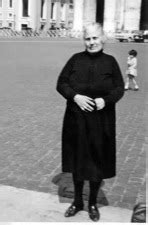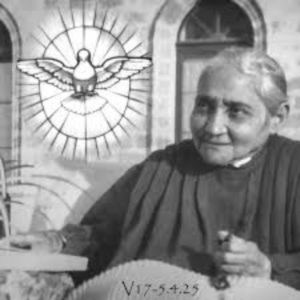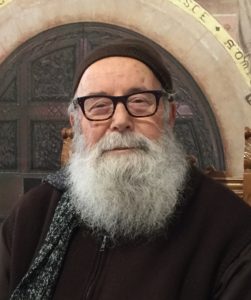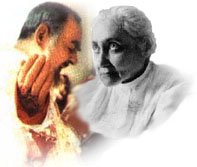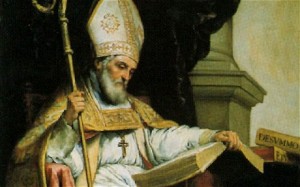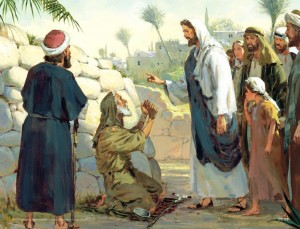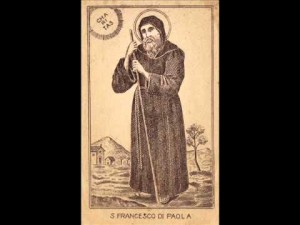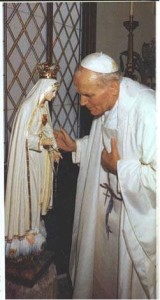THE LAST TRIBULATION
PRELUDE TO THE REIGN OF GOD ON EARTH
“Before Christ’s second coming, the Church must pass through a final trial that will shake the faith of many believers (cf. Lc 18, 8; Mt 24, 12). The persecution that accompanies her pilgrimage on earth (cf. Lc 21, 12; Jn 15, 19-20), will unveil the “mystery of iniquity” in the form of a religious deception offering men an apparent solution to their problems at the price of apostasy from the truth. The supreme religious deception is that of the Antichrist, a pseudo-messianism by which man glorifies himself in place of God and of his Messiah come in the flesh (cf. 2 The 2, 4-12; 1The 5, 2-3; 2 Jn 7; 1 Jn 2, 18.22)”. Catechism of the Catholic Church (675)
“FOR AT THAT TIME THERE WILL BE A GREAT TRIBULATION, SUCH AS HAS NOT BEEN SINCE THE BEGINNING OF THE WORLD UNTIL NOW,
NOR EVER WILL BE.”
Matthew 24: 21
“I WILL ONCE MORE SHAKE NOT ONLY EARTH, BUT HEAVEN.”
Hebrews 12: 26
“…BUT WHEN THESE THINGS BEGIN TO HAPPEN, STAND ERECT AND RAISE YOUR HEADS BECAUSE YOUR DELIVERANCE IS NEAR AT HAND.”
Lucas 21: 28
———————————————————————————————–
“…SO SHALL MY WORD BE THAT GOES FORTH FROM MY MOUTH; IT SHALL NOT RETURN TO ME VOID, BUT SHALL DO MY WILL, ACHIEVING
THE END FOR WHICH I SENT IT”.
Isaiah 55: 11
———————————————————————————————–
“INDEED, THE LORD GOD DOES NOTHING WITHOUT REVEALING HIS PLAN TO HIS SERVANTS, THE PROPHETS”.
Amos 3: 7
———————————————————————————————–
Just as this truth has been manifested in Scripture and by the Magisterium of the Church, it is now confirmed in the writings of the
Servant of God Luisa Piccarreta.
History of her Cause of Beatification and Canonization
On October 29, 2005, His Excellency Mons. Giovanni Battista Pichierri, Archbishop of Trani, Barletta-Biceglie and Titulary of Nazareth, in Corato, Italy, having completed the diocesan investigation (“inchiesta diocesana”) of her fame of sanctity with the compilation of testimonies and documents, remitted his definitive judgment on the sanctity of the Servant of God Luisa Piccarreta to the Holy Father.
In a communiqué of 2008, the Archbishop of Trani, informed “that the Congregation for the Causes of Saints, in waiting to issue a decree on the legal validity of the diocesan investigation, has submitted the writings of the Servant of God for examination, to the two theological Censors, in conformity with the normative canon and the practice in force”. Communique n. 2 (Prot.n.098/08/c3) regarding the process for Beatification and Canonization of the Servant of God Luisa Piccarreta, Trani, May 30, 2008. Solemnity of the Sacred Heart of Jesus.
The work of the theological Censors.
Before 1927, the writings of Luisa (the first 19 volumes and The Hours of the Passion), had already obtained the “Nihil Obstat” from the now Saint, Annibale Maria Di Francia (Censor on behalf of the Archdiocese) and the Imprimatur of the then Archbishop Mons. Giuseppe M. Leo. In addition to this previous study, the Congregation for the Saints, conforming to the canonical normative and actual praxis establishes that the writings of a Servant of God should be submitted for examination by at least two theological Censors (whose names would remain secret); this should be completed before formally initiating the process at the level of the Holy See.
As this work on the writings had not taken place within the diocesan process, the Dicasterio ordered the completion of this requisite with the intention to be able to issue the decree on the legal validity of the diocesan investigation and in this manner initiate the Roman process. The theological Censors, named by the Church, must examine the writings and verify that there is nothing in them contrary to faith and tradition, and must also describe in their verdict the personality and the spirituality of the Servant of God.
The Holy Congregation for the Saints assigned this work to two theological Censors, asking their evaluation. After almost three years, I ANNOUNCE TO YOU TIDINGS OF GREAT JOY:
Corato (Italy), July 23, 2010. Sister Assunta Marigliano, President of the Píous Association “Luisa Piccarreta – Little Daughter of the Divine Will” with its seat in Corato, Italy, who is responsible for the promotion of the Cause for Beatification and Canonization of the Servant of God Luisa Piccarreta; unofficially disclosed today grand news in relation to the Cause of Luisa, which fills us with great joy:
It was learned today that ALSO the second theologian appointed by the Holy See for the evaluation of the writings of the Servant of God Luisa Piccarreta, has completed his assessment and has officially rendered his verdict: POSITIVE. The results of this assessment, is in itself a recognition of the purity of the doctrine of the Divine Will manifested in these writings.
———————————————————————————————–
THE HOUR HAS COME!
“TAKE COURAGE, IT IS I; DO NOT BE AFRAID.”
Matthew 14: 27
“I AM GOD, THERE IS NO OTHER; I AM GOD, THERE IS NONE LIKE ME. AT THE BEGINNING I FORETELL THE OUTCOME; IN ADVANCE, THINGS NOT YET DONE. I SAY THAT MY PLAN SHALL STAND, I ACCOMPLISH MY EVERY PURPOSE. YES, I HAVE SPOKEN, I WILL ACCOMPLISH IT; I HAVE PLANNED IT, AND I WILL DO IT”. Isaiah 46: 9-11
“THERE SHALL BE NO MORE DELAY. AT THE TIME WHEN YOU HEAR THE SEVENTH ANGEL BLOW HIS TRUMPET, THE MYSTERIOUS PLAN OF GOD SHALL BE FULFILLED, AS HE PROMISED TO HIS SERVANTS, THE PROPHETS.” -Revelations 10:7
————————————————————————————-
“OUR FATHER… YOUR KINGDOM COME, YOUR WILL BE DONE,
ON EARTH AS IT IS IN HEAVEN”. Matthew 6: 10
——————————————————————
Saint Bernard: “We know of a triple coming of Our Lord. In addition to the first and the last, there is an intermediate coming. The first and the last are visible but THIS ONE, IS NOT… And so it happens that in the first coming, Our Lord came in His Humanity and debility, IN THIS SECOND COMING, IN SPIRIT AND POWER; and in the last one, in Glory and Majesty”. (Liturgy of the Hours, Time of Advent).
“Not by an army, nor by might, BUT BY MY SPIRIT says the Lord of hosts.”
Zechariah 4:6
——————————————————————
¡MARANA THÁ! ¡COME LORD JESUS!
“Heavenly Mother, pour fire and flames into my heart, that they may consume me, and burn away all that is not Will of God”.
——————————————————————
————————————————————————————————
“BLESSED ARE THOSE WHO HAVE BEEN CALLED TO
THE WEDDING FEAST OF THE LAMB”.
“THESE WORDS ARE TRUE; THEY COME FROM GOD.”
REVELATION 19: 9
DAILY PRAYER
This Prayer is a personal and subjective compendium of a collection of prayers well-known to all, but supplemented with invocations inspired and largely extracted from the writings of Luisa Piccarreta. They are directed to dispose us to gradually receive all that God, in His Infinite Love, wants to give us. They are, as well, a total consecration of all our being and of each and every one of our acts, to the Divine Will (“tree of life”-Genesis 2:9, Ephesians 1:9, Revelations 10:7 and 22:14), so that the Divine Will becomes our primary act and our Life, and with Its Divine Power, animate and rule EVERYTHING in us, just as it was when God created our first father Adam in his original nature. It is only when God’s Divine Will reigns in us and we do everything in His Will, that we will be able to fulfill our earthly mission of being “in the Image and Likeness of God” (Genesis 1:26), and of being “participants in His Divine Life”, (2 Peter1:4, Catechism #375, L.G. 2,2), purpose for which He created us.
INVOCATION
Through the intercession of Our Most Holy Mother, Mother of the True God for Whom we live, Queen of the Divine Will and our Co-Redemptress, Mediatrix and Advocate, I now pray for the anointing of all those who read this prayer, so that their hearts and their minds will be totally and completely opened to the Light, Love and Divine Wisdom of God, so that they may attain the Grace to live in the fullness of Life in the Divine Will that was decreed by Him for each one of us, for His Glory, and for ours IN HIM. AMEN!
By the sign of the cross… In the name of the Father, of the Son and of the Holy Spirit, Amen.
Oh Most Holy Trinity, Father, Son and Holy Spirit, may your Blessing confirm in me the gift of your Likeness, may It confirm in me what You did in the creation of man, and renew the Consecration with which you consecrated me to You in my Baptism. May your Blessing Lord, imprint in me the triple seal of the Power, Wisdom and Love of the Three Divine Persons; may It restore my strength, heal me and enrich me. Lord, let your Blessing be the restoration of your Divine Will in me, the reintegration of your Image in me, and the confirmation of your Likeness.
Bless me Oh Supreme Majesty, Bless me with Our Blessed Mother, Bless me with all the Celestial Court, Bless me with each created thing in all Creation, Bless me with all that is encompassed in your work of Redemption and Sanctification. Bless my heart, my thoughts, my words, … Bless all my being, all my life, all my acts, and seal them with your Divine Will, so that EVERYTHING calls within me your Divine Volition.
Oh, Most Holy Trinity, behold your child. I have come to do and to live in your Holy Will. I LOVE YOU, I ADORE YOU, I BLESS YOU, I WORSHIP YOU, I GLORIFY YOU AND I GIVE YOU THANKS. Infuse oh God your Spirit in me so that I can pray and work in spirit and truth, so that all that I do is for your Glory.
Holy, Holy, Holy is the Lord, God of the Universe, Heaven and earth are full of your Glory. Blessed is He who comes in the name of the Lord, Hosanna in the Highest.
Come Holy Spirit, come by the powerful intercession of Our Blessed Mother, your most beloved Spouse. Open my mind and my heart—fill me with the flame of your Love. Give me your Gifts and your Graces and I will be created, and you will renew the face of the earth. PURIFY ME AND SANCTIFY ME.
I confess to Almighty God, and to you my brothers and sisters, that I have sinned, through my own fault, … and I ask Blessed Mary ever Virgin, …
Oh Most Holy Father, forgive me for the great injustice I have committed against You by my rejection of your Will, of your Love, of your Life; forgive me for all my sins. Give me the grace to dispose myself to restore your Divine Will in me, to sin no more, to have remorse for my sins and to make reparation to you, so that I may be restored to you, Oh Father.
Oh My Jesus, come to act in me. May it be You, Lord, Who does Everything in me, may it be You Who does Everything together with me. Lord, I am nothing without You. Come, Lord to do everything in me and with me. I will do nothing without You and You will do nothing without me. Make of me what you want. I want my life to be entirely Yours. I want to be Nothing oh Lord, so that You will be Everything in me. You are Everything! ALL THAT I HAVE IS YOURS, oh LORD.
I want to be ONE in You with the Father and the Holy Spirit. I want to be transformed TOTALLY in You oh Lord. To You Lord, I come in the refuge of the Immaculate Heart of Our Most Holy Mother and I give you thanks. I surrender and deposit in your Hands, ALL my being, my life, my acts, my will, and with your Grace, I receive and take possession of Your Will, Lord, because you want to give It to me. I want to be ONE in You Lord: ONE LIFE, ONE LOVE, ONE WILL.
I unite my will with Yours Lord, and together with You I want to do what You do. I want my thoughts, my love, my will, my desires, my heartbeats, my respirations, my prayers, my sufferings, and each one of my acts, to be ONE with Yours, and to repeat act for act ALL that You do. Come Lord to dwell in me and receive all that is Yours. I want Oh My God, to be a Living Host where You deposit Your LOVE; I want to be Your respite, Your repose, Your delight, Your home, and that You may be mine.
Oh My Jesus, may Your Divine Will be mine, as this is Your Will and it is also mine; lose my will Lord, in Yours, and give me Your Will to live in It. Jesus, I pour everything in You, so that I may do all my acts, not in my will, but in Yours. Lord, help me to never again do my will, and to do and live only in the Divine Will, even at the cost of my life or any other sacrifice. Lord, bless all my being and my work and seal it with Your Will, so that everything in me calls for Your Divine Will; so that your Will may be the beginning, the substance, and the entirety of Your Life in me; that It may be my guide and my sustenance; that It may conduce me in Your Arms to my Celestial Home.
Reveal the Father to me, oh Lord, and reveal Your Most Holy Will to me and make It reign in me as It reigns in You. May Your Will Lord, be known, loved and Reign and dominate in the entire world. Infuse Your Spirit in me so I can be ONE in You with the Father and the Holy Spirit, so that I can live in the Plenitude of your Divine Will and give you all the Love, Honor, and Glory that from each and every one belongs to You.
Oh Most Holy Mother, to You I consecrate all my being, all my life, all my acts, all my family, absolutely EVERYTHING. Oh Most Holy Mother, to You I surrender my will so that You may exchange It for me for the Divine Will. Tie it, Oh Mother, together with Yours, to the foot of the Celestial Throne, and give me the Divine Will as the center of my life. I ask you that you keep me always in the refuge of your Immaculate Heart and that you complete and supplement all of my acts, so that they will always be done and lived in THE DIVINE WILL.
Oh Most Holy Mother, to make the consecration of my will to You more solemn, I invoke the Most Holy Trinity, all the Angels and Saints, and before them, I make a total consecration of my will, of all my life and of all my acts to my Heavenly Mother. Oh Most Holy Mother, I am TOTUS TUUS and I accept and receive your seal in me.
Oh Heavenly Father, behold your child, I have come to do your Will. Let it be done in me according to your Word. To you I come in the refuge of the Immaculate Heart of Our Most Holy Mother and totally fused with Jesus Christ Our Lord.
Prepare my soul Father, so that by the work and grace of the Holy Spirit I can live in the PLENITUDE OF YOUR DIVINE WILL and NEVER AGAIN reject It. I love you Oh My Father who art in Heaven; I love you Oh My Father who art in my heart. I love you Father with all my being, with all my life, with all my acts.
Oh Most Holy Trinity, prostrate before your Throne, I surrender absolutely ALL my being: my heart, my body and my blood, my soul and my spirit, my will, my memory, my intelligence, my respirations, my heartbeats, my movements, my works, and ALL that I do and have done, from the smallest act, to the most profound thought, prayer and suffering, and being ONE IN OUR LORD JESUS CHRIST, I want all my acts to be done, now and ALWAYS, in the UNITY of Your Divine WILL.
Give me the Grace oh My God, to be able to LIVE TOTALLY ABANDONED IN YOUR DIVINE WILL; to ALWAYS DO EVERYTHING IN YOUR WILL, and to LIVE ALWAYS IN YOUR WILL. Give me the Grace to be able to die to all in me that is not Your Divine Will, and help me to begin anew my life in the UNITY of the Light of Your Divine Volition, in that first Act in which my first parents lived before the original sin, until I can say: ‘I can do ANYTHING, because I have been transformed into the Divine Will, Which has destroyed all my weaknesses, miseries, and passions’.
Oh Supreme Majesty, may Your Divine Will be MY LIFE. I WANT Lord, to know solely Your Will, and that EVERYTHING will become for me the Will of God: sorrow, pain, suffering, happiness, all circumstances, my heartbeats, my respirations, my movements, my steps, my works, my nourishment, my sleep and even all the most natural things. May ABSOLUTELY EVERYTHING be for me Divine Will. I WANT to live upon Your Paternal lap, in Your care, at Your expense, in the opulence of Your Riches, Joy, and Happiness.
I ask Oh All-powerful and Eternal GOD, that You give me Your Grace, so that each beat of my heart, each breath, each movement of my blood and of my body, each thought, work, prayer, suffering, etc., and each act of my existence (and especially at the hour of my death), will be always and in every instant done in Your Divine Will, and that they be always a continuous surrender of my will…, a continuous I LOVE YOU, I ADORE YOU, I BLESS YOU, I WORSHIP YOU, I GLORIFY YOU, I ATONE to YOU, I CONSOLE YOU, AND I ASK YOUR FORGIVENESS for everyone…. I want to be a continuous outpouring, repose and rest for Your Infinite Love.
Come Divine Will to work in me, come to Reign in me, come to be my Life, my Nourishment, my ALL. Animate my body, my blood, my soul and my spirit; animate my intelligence, my memory, my will, ALL my being. ALL my Life, ALL my acts; animate my death so that my last act will be lived in the last Act of Jesus Christ Our Lord on earth. I want Lord, TO LIVE my death in your Will. ENLIVEN ME, ANIMATE ME, AND CONSERVE ME CONTINUALLY IN THE LIGHT OF YOUR DIVINE WILL. Come to be ABSOLUTELY ALL in me. PURIFY ME AND SANCTIFY ME. I WANT your FIAT Reigning, and Dominating in me.
OH MY GOD, IN YOUR DIVINE WILL REIGNING IN ME, I GIVE YOU MY FIAT, MY WILL TO WANT TO LIVE ALL MY LIFE AND ALL MY ACTS IN THE DIVINE WILL, SO THAT MY FIAT WILL BE ONE WITH YOURS AND HAVE ALL THE POWER OF A DIVINE WILL. BEHOLD OH LORD YOUR SON LIVING IN AND OF YOUR DIVINE WILL. Help me Oh my God to live in its Plenitude for Your Glory.
I WANT, Oh my God, your Will to Act in me as It Acts in You. I WANT ONLY WHAT YOU WANT AND NOTHING MORE. Your Will is mine; what You want, I want; what You do, I do. I want Lord, to be Your display of Love, I want to be the depositary of Your Works; I want to be the refuge of Your Delights, of Your Joys and of Your Happiness; I want to be the vault of Your secrets and Celestial Mysteries; I want to be the exposition of Your Infinite Beauty. Oh Divine Will, with your enchanting beauty enrapture the earth, and with your sweet delight, enrapture all the creatures, so that ONE will be the Will of all with Yours, ONE the Holiness, ONE the Life, ONE your Kingdom, ONE your FIAT, ON EARTH, as is in Heaven.
Oh my Jesus, I WANT TO LIVE in You all that YOU Lived in Your Divine Will, and I want You to Live It in me. (Catechism #521), so that in this way, ALL YOUR LIFE AND ALL YOUR ACTS will become MY LIFE. I WANT to be Your ECHO: echo of ALL Your Acts, and to repeat and renew EACH and every one of Them in me, until You, Lord, make a Perfect Act in me, until You dwell totally in me and I can be another Jesus on earth, and in this way being able to give you Complete Glory in Your Divine Will Reigning in me, with Your own Love and with Your Own Life.
Oh my Jesus, in the UNITY of my life and of all my acts with Yours, and in the Power of Your Divine Will Acting in me, I WANT, Lord, to repeat YOUR ENTIRE LIFE AND ALL YOUR ACTS in me, and receive, renew and take possession of ALL that you did Lord, and of all the acts of Our Most Holy Mother. I live your Life Lord, with You, and I love as You Love and with your Love, and I want only what you want, giving in this way, with You, complete satisfaction, correspondence, Love Honor and Glory to the Celestial Father.
Oh Most Holy Mother, Queen and Mother of the Divine Will, with your universal dominion and reign, dominate over me, so that the human will cedes its rights to the Divine Will; dominate oh Mother over Our God, so that His Divine Fiat descends in my heart and in all hearts, and reigns in us, ON EARTH, as It does in Heaven.
Saint Joseph, you will be my protector, the custodian of my heart, and you will hold the keys of my will in your hands. You will jealously guard my heart and will not return it to me, so that I am sure of never straying outside the Will of God.
My guardian Angel, guard me, defend me. Help me in everything, so that I can live in the Will of God.
Celestial Court, come to my assistance, so that I may always live in the Divine Will.
Oh Most Holy Trinity, fused totally in Jesus Christ Our Lord, and in the UNITY and Power of the Divine Will Reigning in me, together with Our Most Holy Mother, and with all the Angels and Saints, I LOVE YOU, I ADORE YOU, I BLESS YOU, I WORSHIP YOU, I GLORIFY YOU, I ATONE TO YOU, I CONSOLE YOU, I ASK YOUR PARDON AND I GIVE YOU THANKS, and in ALL, with ALL and for ALL, I ask Oh my God: ‘LET YOUR KINGDOM COME, YOUR WILL BE DONE ON EARTH AS IN HEAVEN’. AMEN!
